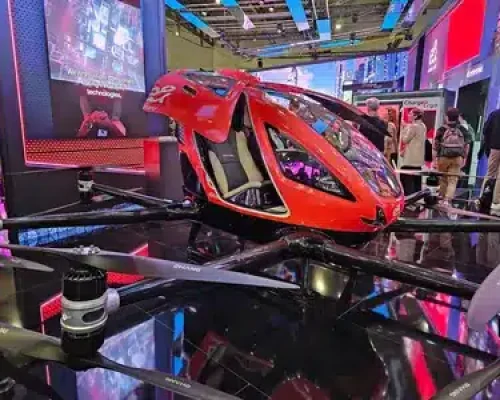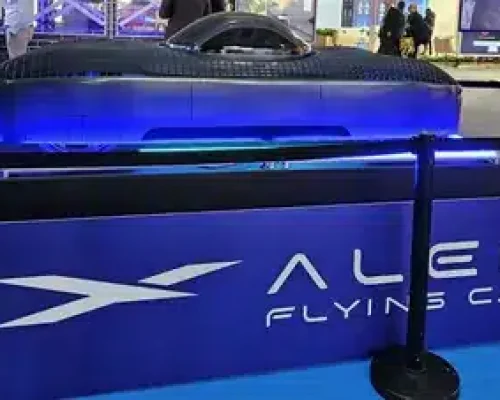The streets of Barcelona buzzed with anticipation as the Mobile World Congress 2024 (MWC) unfolded, unveiling insights and innovations that paint a vivid picture of our technological tomorrow. With almost 100,000 people in attendance, MWC is clearly on the world’s stage as dignitaries like the King of Spain and tech leaders like Michael Dell, Antonio Neri, Ziad Asghar and others spoke at the podium and on panels. Under the theme “Future First”, MWC 2024 beckoned attendees to embrace collaboration and unity as the cornerstones of a future brimming with possibilities.

Personally – and outside of the 5 miles of daily showroom walking (thank you, Fitbit) – conversations this year focused primarily on immediate customer needs. Based on the rest of this blog (below), I will let you guess what triggered these immediate requested meetings (hint: open-source based virtualization).
In case you missed it, amidst the flurry of activities and messages, here are a few announcements, vendors, booths and actions from MWC that I think you might find interesting:
AI EVERYWHERE. More than 40 sessions at the event focused on artificial intelligence, with an emphasis on Gen AI and how it is on the verge of transforming the way we work, live and interact. The global AI In Telecommunication market was valued at $2.5 billion in 2022 and is anticipated to reach $19.2 billion by 2029 (reflecting a CAGR of 40.6%)!

- Huawei came out swinging for the fences this year as their massive booth space provided an aura of “openness”. No walls, just open floor plans. From wearables to connected homes to next generation data center infrastructure like OceanStor, Huawei’s floor was buzzing with onlookers.

Microsoft, one of the lead sponsors this year, received a lot of chatter around its Azure Operator Nexus platform. This platform is the evolution and culmination of the company’s MetaSwitch and Affirmed Networks acquisitions. Carriers like AT&T are scaling their fixed, wireless and carrier operations on Nexus today.

However, amidst the bustling halls, a less active VMware booth stood out. The recent Broadcom acquisition loomed large, casting uncertainty and an echo of upcoming price hikes that could impact customers. As conversations swirled about the VMware acquisition, attendees grappled with the implications, highlighting the importance of technology advancement, stability and transparency in an ever-evolving tech landscape. But with one’s loss there is another’s gain – and that is Red Hat. We saw first-hand the activity and discussions with Carriers, Operators, and anyone currently a VMware customer exploring alternative virtualization platforms in response to the uncertainty surrounding VMware. For some customers this is a judicious exercise, others a mandate from their superiors, and others an opportunity to lean into a broader trend towards diversification and contingency planning within the industry.

For the “Futurists” out there, we saw a lot of eye candy at the show:
Verbose robotic humanoids from Etisalat and dogs from Xiaomi prowled the exhibition halls, demonstrating advancements in artificial intelligence and robotics.


- Augmented Reality-based contact lenses from XPANCEO which promise to replace bulkier AR/VR/VR devices.

- High-definition 3D screens that transported visitors into immersive digital environments, offering glimpses into the future of video gaming, entertainment and communication.


Autonomous vehicles that silently navigated through simulated cityscapes and manufacturing facilities via cellular or private cloud networks as demonstrated by Deloitte.


Even a prototype of a flying car from Alef Aeronautics was on display.

These innovations served as reminder that the future is not only about technological advancement but also about the imaginative possibilities that lie ahead.
To understand what all of this means from a dollar perspective (the impact on the global economy), here is some data that MWC points to from various sources:
Open RAN deployments in public 5G networks will accelerate after 2025, with 1.3 million open RAN cells worth $19.2 billion deployed by 2030. (Source: Rethink Research)
The 5G Fixed Wireless market is set to reach $88.5 billion by 2027 – with a whopping CAGR of 99.3%. (Source: Polaris Market Research)
Cloud manufacturing market estimated to reach $371.7 billion by 2026, driven by the need for digital transformation. (Source: MarketsandMarkets)
AI will provide $16 Trillion worth of potential contribution to the global economy by 2030 (Source: PWC)
The global wearable AI market is anticipated to garner $230 billion by 2033, rising at an impressive 27.6% CAGR from 2023 to 2033. (Source: Grand View Research)
By 2026, 24% of retail purchases are expected to take place online. By 2026, the e-commerce market is expected to total over $8.1 trillion. 91% make online purchases using their smartphone. (Source: Forbes)
Conclusion
As the curtains close on MWC 2024, the resounding message lingers: the future is not a solitary endeavor but a collective journey. Amidst the excitement and uncertainty, one thing remains certain: the need for adaptability and collaboration in navigating the evolving landscape of technology. I am looking forward to MWC 2025 and the advancement from this year!




